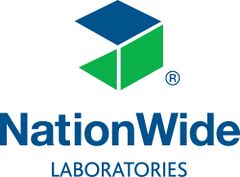Feline hyperadrenocorticism
Introduction
Hyperadrenocorticism (HAC) is a rare condition in the cat. The paucity of true clinical cases means that there are few studies of diagnostic accuracy for the different screening tests. Unlike the situation in the dog, there is no reliable information on diagnostic sensitivity and specificity. In its absence, recommendations have been derived from studies in healthy cats and extrapolated from the dog and no clear consensus exists as to which of the tests is most reliable.
Routine clinicopathological test results are variable; the pattern of mature neutrophilia, lymphopaenia and eosinopaenia noted in dogs is not seen consistently. Monocytosis in cats reflects inflammation rather than a stress/corticosteroid response.
Concurrent diabetes mellitus, secondary to insulin resistance, is seen in the majority of cats with hyperadrenocorticism, therefore marked hyperglycaemia with glycosuria is common. There may be hypercholesterolaemia, elevated AP and ALT (probably due to development of hepatic lipidosis secondary to DM). USG usually remains =>1.020 since PuPd is secondary to osmotic diuresis rather than an inhibitory effect of cortisol on renal tubular concentrating ability.
Screening tests for feline HAC include the UCCR, ACTH stimulation test and low-dose dexamethasone suppression test. These are not perfect tests, they may confirm hypercortisolaemia but do not differentiate between chronic stressful disease and HAC. As in the dog, results must be correlated with clinical and other laboratory findings.
Urine cortisol:creatinine ratio (UCCR)
This is a very sensitive test to exclude HAC but cannot be used to confirm the diagnosis due to it’s poor specificity (many false positive results in stressed or sick cats).
A morning urine sample is collected at home by the owner; this reflects cortisol release over several hours in an environment where stress should be minimal will have a lower false positive rate than those obtained from animals in the clinic. Urine samples are taken from a litter tray in the home environment Non-absorptive material such as gravel, glass beads etc should be used as litter.
Normal cats have a UCCR <10 x106
Feline ACTH stimulation test
The ACTH stimulation test is an alternative approach to investigation. As with any test for HAC, this test may be affected by chronic illness, causing a significant false positive rate.
Protocol
- Take 2ml of clotted or heparinised blood
- Inject 0.125mg Synacthen i/v
- Take a further sample of 2ml clotted or heparinised blood at 1 hour post Synacthen injection
- If possible, separate the serum or plasma before dispatch to the laboratory, labelling the tubes carefully ‘pre’ and ‘post’
Test Codes - Please visit www.nwlabs.co.uk or see our current price list for more information
Interpretation
In normal cats, an increase in cortisol levels up to 400nmol/l is expected. Increases greater than this are consistent with hyperadrenocorticism where there are compatible clinical signs. False positive results may be noted with stressful illness.
Feline combined high dose dexamethasone/ACTH test
This test combines a dexamethasone suppression test with an ACTH stimulation test. Since more than one diagnostic endpoint is assessed, this test may be more accurate than the ACTH stimulation test alone.
Protocol
- Collect basal blood sample
- Inject 0.1mg/kg Dexamethasone i/v
- Collect a second blood sample at 2 hours
- Immediately inject 0.125mg of synthetic ACTH (Synacthen) i/v
- Collect a third blood sample at 3 hours (1 hour after ACTH)
- Separate samples and label sample tubes clearly
Interpretation
Normal cats show at least 50% suppression to a value <40nmol/l after dexamethasone and normal cortisol response after ACTH stimulation (up to 400nmol/l). Cats with HAC show little suppression after dexamethasone and an exaggerated response after ACTH.
Endogenous ACTH
Can be used as a discriminating test, in cats with confirmed HAC to differentiate between pituitary and adrenal dependent disease. The sample is EDTA plasma; special sample handling is required, contact the laboratory for further instructions.
Adrenal ultrasonography
Can detect discrepancy in the size of the adrenal glands (adrenal dependent HAC) vs bilateral adrenal enlargement (pituitary dependent HAC or chronic illness).
Feline hypoadrenocorticism
Hypoadrenocorticism is a rare disorder in cats, The ACTH stimulation test is recommended for diagnosis. The resting cortisol concentration is low and there is little or no response to stimulation.
Feline hyperaldosteronism (Conn’s syndrome)
Hyperaldosteronism secondary to adrenal neoplasia has been reported and is associated with hypertension and hypokalaemia. Diagnosis relies upon measurement of aldosterone and imaging of the adrenal glands.
Test Code - Please visit www.nwlabs.co.uk or see our current price list for more information
